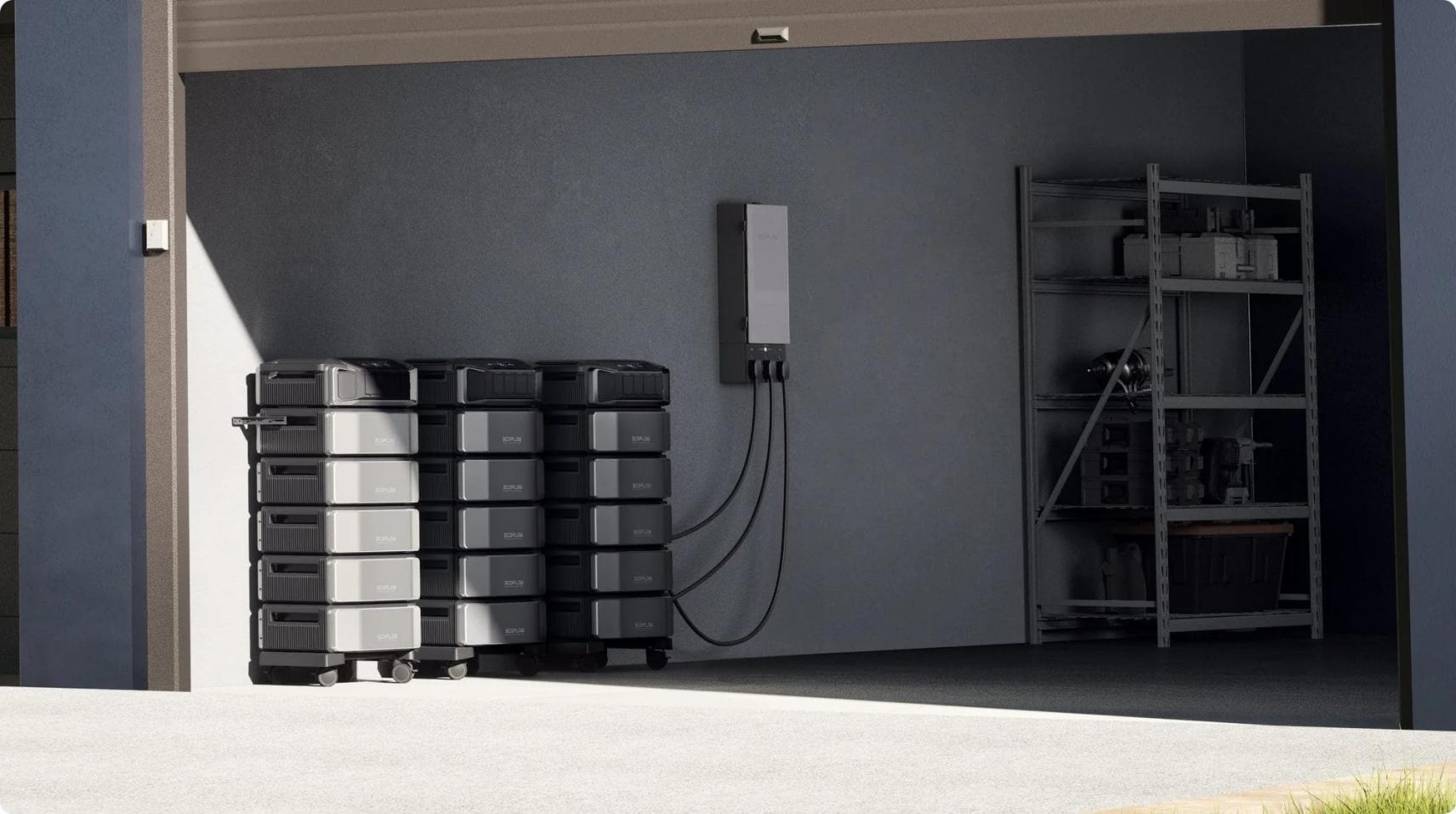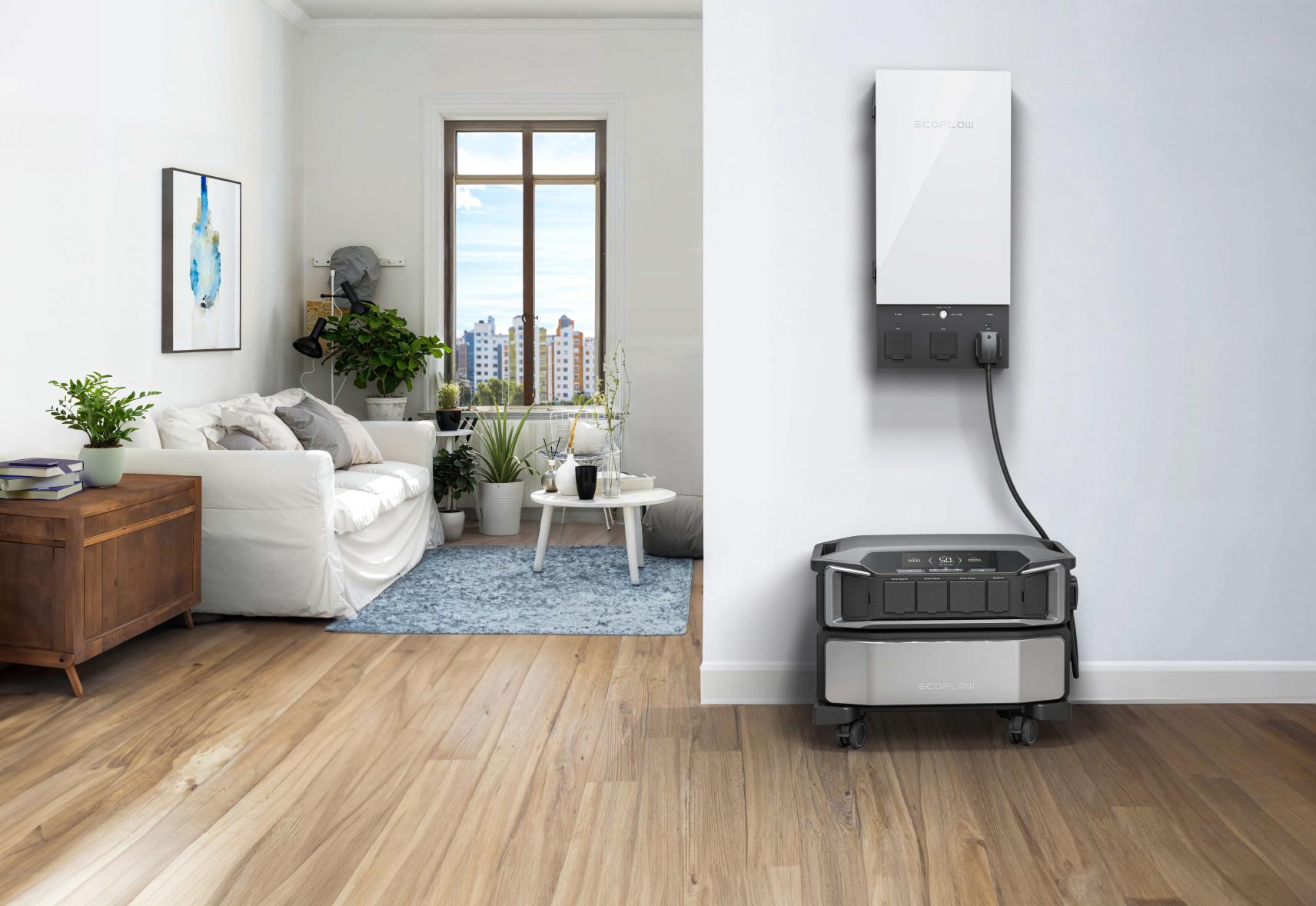Generator Shed: Ideas and How to Build a Safe Enclosure for Your Portable Generator
A portable generator is a great tool to have when the power goes out as it keeps your lights on and your fridge running. But you can't just leave it out in the rain, plus the noise all the time can make anyone go crazy. That's why you'll need a shed for a generator.
A good shed can do it all. It keeps your generator in shed safe from the weather and thieves, makes it much quieter, and keeps it ready to go at any time. This guide will help you plan for the most important things and give you some great ideas. And we will also explore the possibility that a modern power supply might not need a shed at all.
Generator Shed Designs: Three Common Styles
The right shed design protects your generator and fits your specific needs. Here are three popular styles, each with its own advantages.
The Lean-To Shed
A lean-to shed is a practical design with a single, sloped roof that is built against an existing structure, like your house or a fence. The roof slants away from the wall, which effectively directs rain and snow away from the generator and prevents water from pooling. This style is an excellent choice if you prioritize function and want to save space, as it's generally easier and less expensive to build than a standalone shed. Its simple shape also makes it easy to plan for essential ventilation ports and an access door for refueling.
The Portable Enclosure
A portable enclosure is less of a permanent shed and more of a lightweight, movable cover. It's the ideal solution if you store your generator in a garage but need to run it safely outside during bad weather. It works like a sturdy, fire-retardant box, sometimes on wheels, that you place directly over the generator while it's running to shield it from rain or snow. This offers great flexibility, but for safety, any portable enclosure must have dedicated openings for airflow and a separate port to safely channel the exhaust fumes away from the unit.
The Gable Roof Shed
A gable roof shed is a standalone structure with a classic, triangular roof that looks like a miniature house. Its roof has two panels that slope down from a central peak, a design that is excellent at shedding rain and snow while providing more interior space. This is the best option for aesthetics and durability, especially if you want the shed to blend in with your backyard. You can match the siding, paint, and shingles to your home to make it an attractive feature. While it's a more involved project, it creates a permanent, secure, and fully weatherproof home for your generator.
Planning Your Shed: 4 Steps You Must Get Right
How to build a generator shed? It is about creating a safe enclosure for a hot, fuel-burning engine. Follow these four steps:
1.Choose Durable, Weatherproof Materials
What you use to build your shed will affect how long it lasts and how well it blocks out noise and heat.
- Treated Wood: If you want something cheap and easy to put together, choose treated wood. It's a popular do-it-yourself project, but don't forget to seal it well with a waterproof stain or paint to keep water out and stop rot.
- Metal (Aluminum or Steel): If you want to be safe from weather and fire, choose metal. One big problem with metal sheds is that they get very hot in the sun, so they must have a good air system.
- Concrete Blocks: If you want to build a strong, quiet, and safe space, use concrete blocks. This option takes the most work and a foundation made of poured concrete, but it provides the best protection.
Material Comparison:
| Material | Estimated Cost | DIY-Friendliness | Durability | Inherent Soundproofing | Heat Management Challenge |
| Treated Wood | Low | High | Good | Fair | Low |
| Galvanized Steel | Moderate | Moderate | Excellent | Poor | High |
| Concrete Block | Moderate-High | Low | Excellent | Excellent | Moderate |
Create a Safe Ventilation System
This is the most important safety step. A running generator produces dangerous levels of heat and lethal carbon monoxide (CO) gas. A proper ventilation system is not optional—it's essential to prevent overheating, fire, and poisoning.
WARNING: Carbon monoxide is an invisible, odorless gas that can be fatal in minutes. Never run a generator in any enclosed space without a properly designed ventilation system. Cracking a door open is NOT sufficient.
First, Give the Generator Space: Build the generator sheds for portable generators large enough to leave at least 3 to 4 feet of clear space on all sides of the generator. This open space is needed for air to circulate properly and cool the engine.
Install Vents for Natural Airflow: The most basic ventilation uses the "chimney effect," where hot air naturally rises. To achieve this, cut an intake vent low on one wall to draw in cool, fresh air. On the opposite wall, cut an exhaust vent up high to let hot air and fumes escape.
Add an Exhaust Fan to Improve Cooling: In many climates, passive vents aren't enough to prevent overheating. Install a thermostat-controlled exhaust fan near the high vent. This will actively pull hot air out of the shed, significantly improving your cooling system.
Install a Direct Exhaust Pipe for Maximum Safety: This is the gold standard. An exhaust extension kit uses a flexible, heat-resistant pipe to connect directly to the generator's muffler and vent all exhaust fumes straight outside through the wall. This method completely removes the primary source of CO and heat from inside the enclosure.
Build a Solid, Dry Foundation
Your heavy generator requires a stable and level base. Building a shed directly on grass or dirt will lead to moisture damage, rust, and an unstable structure.
- Gravel Pad: For a simple and effective foundation, build a level wooden frame on the ground and fill it with several inches of compacted gravel. This provides excellent drainage.
- Pavers or Blocks: For a sturdier surface, lay patio pavers or solid concrete blocks on a leveled bed of sand and gravel.
- Poured Concrete Slab: For the most permanent and stable base, pour a steel-reinforced concrete slab. This is the best choice for heavy sheds, especially those built from concrete blocks.


Soundproof the Shed
Quieting a noisy generator is a primary reason for building a shed. Here is a simple three-step process to significantly reduce the noise.
Step 1: Add Mass to Block Sound: First, stop sound from passing through the walls. Line the interior walls with a dense material called Mass-Loaded Vinyl (MLV). This heavy, rubber-like sheet is specifically made to block sound waves.
Step 2: Add Insulation to Absorb Echo: Next, trap the sound that bounces around inside. After installing the MLV, add a thick layer of Rockwool (mineral wool) insulation. Its texture is excellent at absorbing sound, and it is also fire-resistant.
Step 3: Add a Mat to Isolate Vibration: A lot of noise comes from the generator's vibrations shaking the shed. Place a heavy-duty anti-vibration rubber mat on the floor and set the generator on top of it to stop the shaking at the source.
The Modern Alternative: Backup Power Without the Shed
All the work of building a generator shed—planning for ventilation, soundproofing, and safe exhaust—is only necessary because gas engines are noisy, hot, and produce dangerous fumes. But what if you could get reliable backup power without any of those problems?
That's the advantage of a modern home battery backup system. Unlike a generator, a battery system doesn't burn fuel. This fundamental difference solves every major issue:
No fuel means no toxic fumes.
No engine means no loud noise.
No combustion means no extreme heat.
A battery backup device gets rid of the need for a shed in the first place.
The EcoFlow DELTA Pro Ultra is a battery system for the whole house that can be used as a substitute for a generator. Here’s how it solves each challenge:
It Helps You Avoid Loud Engine Noise: It runs so quietly you'll hardly notice it. This lets you avoid the noise of a gas generator without needing to build a soundproof box.
You Can Safely Use It Indoors: It makes no fumes, so you can safely run it in your garage. You won't have to worry about carbon monoxide poison or special vents.
You Can Keep Your Electronics Running: When the power goes out, it switches to the battery instantly. This protects your computers and Wi-Fi so they don't even flicker or shut off.
You Can Power Your Entire Home: Its strong 7200W output lets you run big appliances like a central air conditioner. You can also add more batteries to power your home for days or even a month.
You Can Get Hands-Free, Automatic Backup: It connects to your home's wiring and turns on by itself when the power goes out. You don't have to do anything—no pull cords, no gas, and no messy cables.
Choosing the Right Power Solution for Your Home
For a gas generator, a well-built shed is a must-have for safety and convenience. By focusing on ventilation and durable materials, you can create a safe and quiet home for it.
However, the effort involved highlights the huge benefits of modern power solutions. For those who want the safest, quietest, and easiest backup power, a whole-home battery system like the EcoFlow DELTA Pro Ultra offers a compelling alternative to traditional generator setups.


FAQs About Building a Generator Shed
Q1: How far away from my house should the generator shed be?
This shed should be at least 5 feet away from your house if you have the space. Even better is 10 to 20 feet. Most importantly, make sure that the engine's exhaust doesn't go near your windows, doors, or vents so that carbon monoxide doesn't enter inside.
Q2: Can I put my generator in a plastic shed?
It's not always a good idea. The generator's engine and fumes can get so hot that they can melt sheds made of plastic. Plus, they're not as safe and are harder to air out properly. It is safer and will last longer to get a shed made of metal or wood that has been pressure-treated.
Q3: Do I need a permit to build a generator storage shed?
This depends on the type of shed and where you live. You don't need a permit for a lot of small sheds that are less than 100 to 120 square feet. But you should always check with the building department or homeowners' association (HOA) in your area before you start to make sure you're following all the rules.
Q4: What size shed should I build for my generator?
The generator needs to fit in the shed, and there needs to be space around it for air to flow. Always leave at least three to four feet of space around the generator. This keeps things from getting too hot and gives you room to do maintenance jobs like adding fuel or changing the oil.